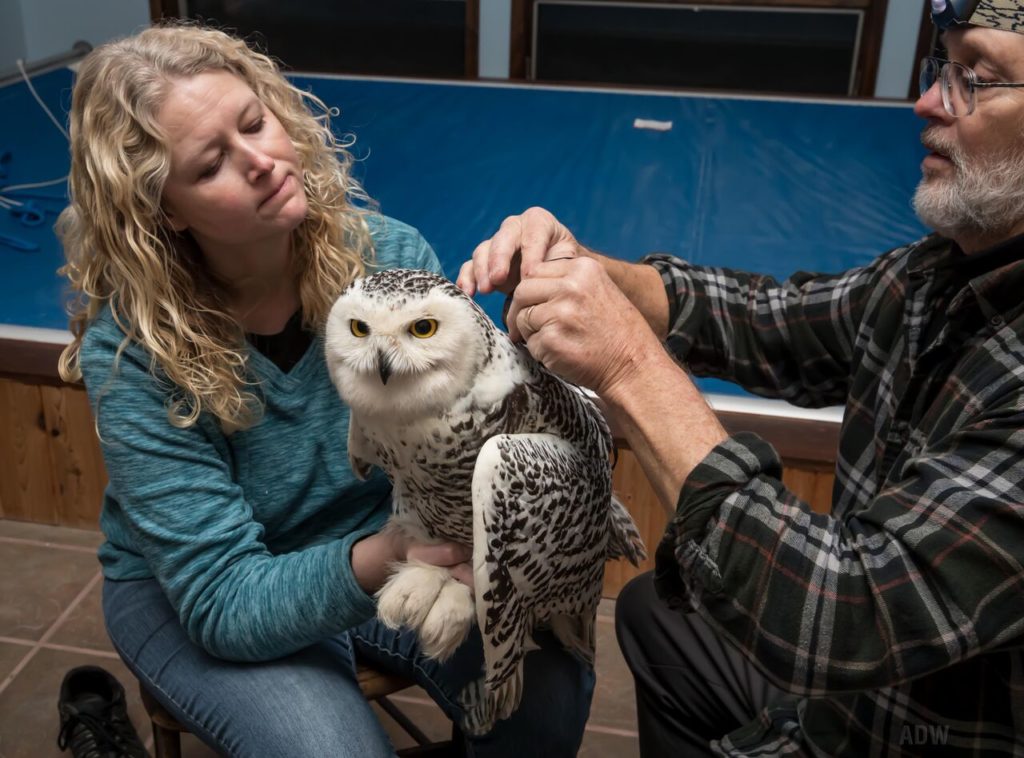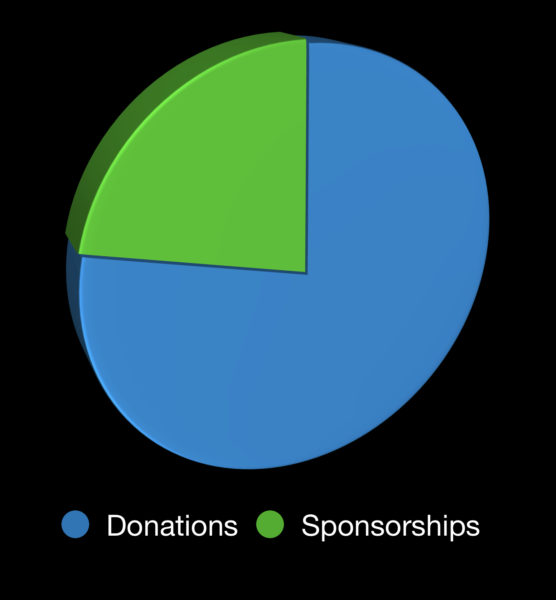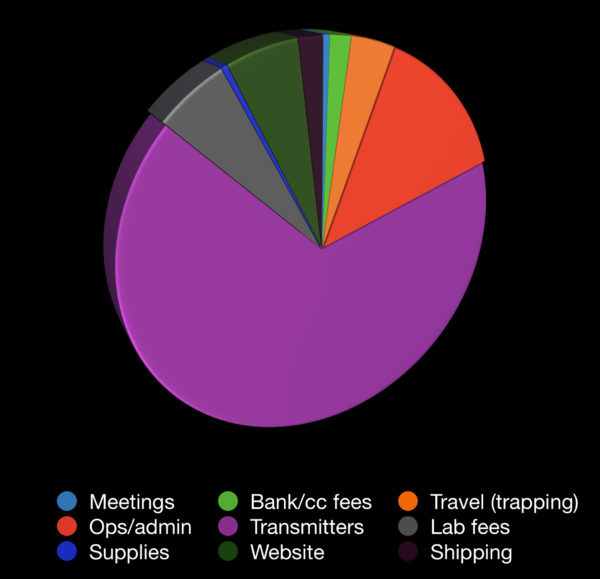Earlier today I received an email from a Project SNOWstorm enthusiast who was considering a donation, but wanted to know where our donations go, especially in terms of salaries, overhead and advertising. I was happy to explain that very little of what we raise goes to overhead, to repay the staff of the Ned Smith Center for handling all of our accounting and bill-paying, and none at all to salaries or advertising.
I directed him to this post from last December, which laid out where our funding comes from and where it goes in a lot more detail. That’s when I realized it might make sense to repost to everyone, since this is a busy time of year for gifts. Although this post discusses numbers from the 2017-18 season, the gist of the message is right on track for this season — Scott Weidensaul
————————-

Melissa Mance Coniglio and Tom McDonald are two the SNOWstorm team members who donate their time and expertise. (©Aaron Winters)
As we’ve mentioned more than once, the only reason Project SNOWstorm exists is you — the folks who have supported our work from the very beginning five years ago. So as we wind down 2018 — and as many of you are making end-of-the-year donations to your favorite charities — we want to both thank you and show you that we put your gifts to very good, very careful use.
Let’s just admit right up front that a financial report isn’t as exciting as, say, the latest report on our trio of Alaskan owls, or the introduction of a newly tagged bird. But especially at this time of year, it’s important information, which we hope will make you feel even better about your support for Project SNOWstorm.
From the start, we’ve been fortunate to have the Ned Smith Center for Nature and Art in Millersburg, Pa., as our institutional home. That way, all U.S. donations are fully tax deductible. And executive director John Booth, finance director Ruth Boyer and the rest of the NSCNA staff have been incredible to work with.

Where does SNOWstorm’s funding come from? Entirely from donations and sponsorships by conservation groups.
Because we start ramping up for the coming winter in late summer, our fiscal year starts in August. Between Aug. 1, 2017, and July 31, 2018, we received $74,768 — $58,968 in donations, either via our online crowdfunding campaign or direct gifts through the Ned Smith Center, and another $15,800 in sponsorships by organizations like New Jersey Audubon, the Nature Conservancy of New Jersey, and the Delmarva Ornithological Society that underwrote transmitter purchases. (All figures are in U.S. dollars.)
On the expense side, we spent a total of $78,223 during that year. The largest chunk — 72.5 percent — were direct research costs. Transmitter purchases totaled $52,614, while lab fees and toxicology testing added $4,124 during that period.

More than 72 cents of every dollar we raise goes into transmitters and lab work.
As we’ve mentioned before, but bears repeating, our research funds go much, much farther because our colleagues at Cellular Tracking Technologies provide their transmitters far below retail, providing an in-kind donation that now exceeds $145,000. And our team of wildlife veterinarians donate their time (and the University of Pennsylvania’s New Bolton Center its facilities) so all we’re paying for on the lab side is the actual sample testing.
The remaining 27.5 percent of expenses were: operations and administration, 13.8 percent (this partially, but not fully, reimburses the Ned Smith Center for staff time); website costs, 5.4 percent; travel (for trapping teams), 3.7 percent; shipping, 1.9 percent; bank/credit card fees, 1.7 percent; meetings, 0.5 percent; supplies, 0.5 percent.
No expense line for salaries? That’s not a mistake. While a few of the folks with Project SNOWstorm are able to help out, at least in part, through their jobs (usually with state or federal resource agencies or conservation groups) most of us donate our time, totaling thousands of hours per year. We love what we do, we’re passionate about snowy owl research and conservation, and we’re grateful for your help in making it happen. Thank you.
(And if you have been thinking about making a donation this year, and haven’t — well, it’s not too late!)


4 Comments on “Where Your Donation Goes”
Be interested in adding miles put on to find owls???
It’s a good point — we haven’t tried to tally up that aspect of the work.
Scott and team too,
My name is John Lahr and I am second vice president of the Lancaster County Bird Club. I reached out last year with wanting to know the cost of the receivers you attach to the Owls because I wished to sponsor or underwrite as you say one of them. I slept on this for the year and decided, even though I can afford to underwrite it myself, to open it to the Bird Club as an educational tool to get more people interested in birding. Club President Barbara Hunsburger asked me to get more info on the cost so we know what we are dealing with. This is why I am sending this email.
Would you please let me know the underwriting and or sponsorship costs of one of the receivers so I can bring it to the board meeting to discuss.
I look forward to being a sponsor or underwriter as well as offering this to the Bird Club. I am thinking we could do this in 2021 as our club is already booked to April of 2020. This way you too can have the info and funds to work with getting more receivers for 2021.
Please respond back to :
johnlahr324@gmail.com.
Thank You for ALL you do for the birds and educating us the public.
John D Lahr
Second Vice President
Lancaster County Bird Club
Thanks for your (and LBC’s) support, John — I’ll be in touch offline. The good news is that CTT, which makes the GPS/GSM transmitters that have been the workhorse of our telemetry efforts, has just announced significant cost reductions that will allow us to stretch donated funds even further.